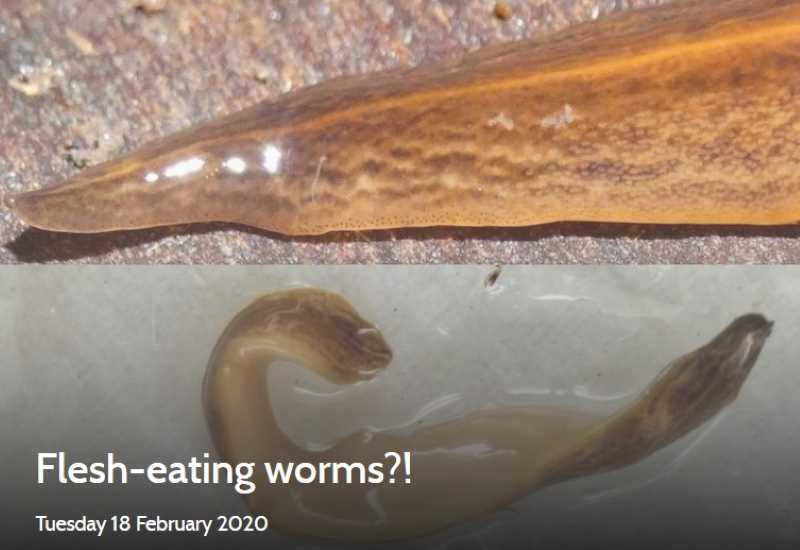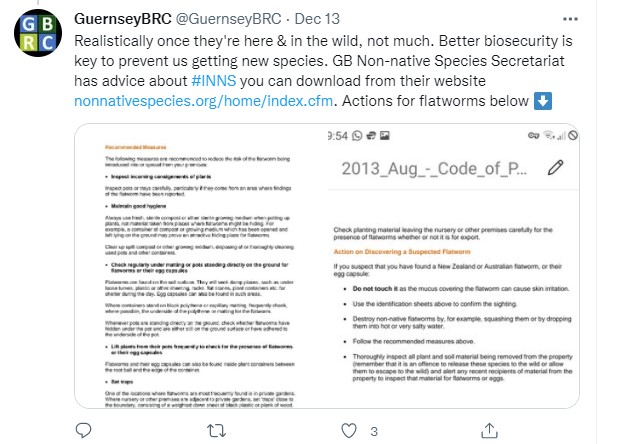

A lack of bio-security has been blamed for the discovery of more non-native flat worms in Guernsey.
The Obama nungara, which is native to South America, was originally discovered in the island in 2008. At that time, it was described as a cause for concern.
Since then, an increasing number have been spotted, and a new one was seen last weekend.
The worm seen most recently is a breed known to have originated in Argentina. It has been confirmed as present in France as well.
As they are non-native, the Obama nungara is considered damaging to local biodiversity. They predate on earthworms and snails which are considered native to the island.
As well as the Obama flatworm, two other species of non-native flatworm have been discovered in Guernsey. They are the Australian flatworm, also known as Australoplana sanguinea, which is native to Australia and eats earthworms, and Black Kontikia flatworm, or the Kontikia ventrolineata, which is also native to Australia as well as New Zealand and which eats snails.
All three species were first identified through an island-wide survey by the States in partnership with Dr Hugh Jones and Manchester University. The identification of the Obama flatworm was the first time the species had been recorded in Europe.

Officials protecting the island's biodiversity said that the most recently discovered Obama nungara in the island provides an opportunity to remind people of the importance of reporting unknown invasive species.
Elizabeth Sweet, Manager of the Guernsey Biological Records Centre, said: “Invasive species are a problem but we don’t know how much without knowing how far they have spread, or if they are even here. Every record helps us build up an accurate picture of distribution."
Ms Sweet is particularly keen to know about any sightings of a species called the New Zealand flatworm, which she says is very distinctive.

Pictures: The Guernsey Biological Records Centre provides advice about the discovery of non-native species.
Ms Sweet says the easiest way to survey for flatworms is to place a piece of non-porous material - such as myplex - on ground in the garden and then to check near the surface for flat worms one week later.
Flatworms live in soil. It is likely that they made their way into Guernsey as eggs or adults inside potted plants.
They pose a risk to local biodiversity because they predate on native earthworms and snails. Where they have established, there have been significant declines in the abundance of earthworms, especially those species which live near the soil surface. This may have consequences to soil health and to the native predators of earthworms, such as blackbirds and robins.
Ms Sweet says it is difficult to remove all trace of flat worms once they have been discovered, but there are some helpful tips available:
Pictured top: An invasive flatworm found in Guernsey. The Guernsey Biological Records Centre asks the public to keep a look out for the New Zealand flatworm and report any possible sightings.
Comments
Comments on this story express the views of the commentator only, not Bailiwick Publishing. We are unable to guarantee the accuracy of any of those comments.